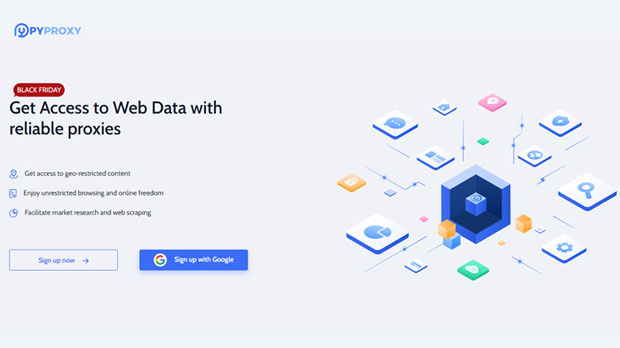When selecting a proxy service provider, two names that often come up in comparison are ProxyEmpire and PYPROXY. Both have garnered attention for their robust features, but the question remains: which one offers the best overall performance, stability, and value for money? In this article, we will conduct a thorough analysis of these two proxy services, exploring their features, performance benchmarks, pricing structures, and stability. This will help you determine which option is better suited for your specific needs and requirements. Whether you're a business owner, developer, or digital marketer, understanding these key factors will help you make an informed decision. 1. Overview of ProxyEmpire and PyProxyBoth ProxyEmpire and PyProxy provide high-performance proxy services, but they cater to slightly different needs in the market. ProxyEmpire is known for its global network of residential proxies, while PyProxy specializes in providing reliable and cost-effective solutions for developers and small businesses. Understanding the strengths of each service is critical in choosing the one that will best meet your requirements.2. Performance Comparison2.1 Speed and LatencyThe speed and latency of proxies play a crucial role in ensuring smooth operations for businesses that rely on web scraping, market research, and other data-heavy tasks. ProxyEmpire typically provides high-speed residential proxies with minimal latency. Their proxies are well-optimized for global use, making them ideal for users with diverse geographic needs. On the other hand, PyProxy's performance is competitive, particularly in regions where affordable proxies are needed. While its latency can sometimes be higher than ProxyEmpire's, it still delivers solid performance for most use cases.2.2 Success Rate of RequestsRequest success rate is another vital metric when comparing proxy services. A higher success rate ensures fewer interruptions during scraping or browsing. ProxyEmpire generally boasts a high success rate due to its premium residential network, which is less likely to be flagged or blocked. PyProxy, while offering reliable service, may encounter occasional issues with blocked IP addresses, especially on high-demand sites. Therefore, if your operations depend on consistently high success rates, ProxyEmpire may be the better choice.2.3 Geolocation CoverageProxyEmpire offers extensive coverage with proxies available in over 100 countries, making it an ideal option for businesses that require proxies from diverse locations. PyProxy, while it does offer some geographic flexibility, typically caters to a more localized market. If you require proxies from specific regions or need to scale your operations globally, ProxyEmpire’s extensive network could be more suitable for you.3. Stability and Reliability3.1 Uptime and AvailabilityFor a proxy service to be reliable, it must offer consistent uptime. ProxyEmpire, with its large infrastructure and maintenance team, typically delivers impressive uptime rates. The service is well-maintained, ensuring that its users experience minimal downtime, even during peak traffic periods. PyProxy, on the other hand, has a relatively smaller infrastructure, which may result in occasional downtimes or slower response times, especially during high-demand periods.3.2 Anti-Ban MechanismsThe ability of a proxy service to avoid detection by websites is critical, especially if you're conducting large-scale scraping or accessing geo-restricted content. ProxyEmpire uses advanced anti-ban mechanisms, including residential IP addresses and automated rotation, which helps prevent blocks. This makes it a strong candidate for users requiring high reliability in sensitive tasks. PyProxy offers basic anti-ban features but may not be as advanced as ProxyEmpire in this area, potentially leading to more frequent blocks on some websites.4. Pricing Structure4.1 Pricing ComparisonPrice is often a decisive factor when choosing between services. ProxyEmpire, while offering top-tier features, comes at a premium price. It is well-suited for businesses with large-scale operations that can justify the higher costs. However, for users with more budget-conscious requirements, PyProxy may be the better option. PyProxy offers a more affordable pricing structure, particularly for developers, startups, and small businesses. 4.2 Value for MoneyWhile ProxyEmpire might seem costly at first glance, it delivers considerable value through its high performance, reliability, and global coverage. For large-scale businesses that rely on proxies for critical operations, the extra cost is often justified by the performance benefits. On the other hand, PyProxy offers good value for smaller operations or less demanding tasks, making it a cost-effective option for users who don’t need the advanced features that ProxyEmpire provides.5. Customer Support5.1 Support QualitySupport quality is another important consideration when choosing a proxy service. ProxyEmpire provides a dedicated support team that is available 24/7 to assist with any issues. Their support is known for being quick and effective, particularly for enterprise-level customers. PyProxy, while providing decent customer service, may not offer the same level of support, particularly in terms of response times. For users with critical tasks that require quick resolutions, ProxyEmpire’s top-notch support may make it the preferable choice.5.2 Knowledge Base and ResourcesBoth ProxyEmpire and PyProxy offer comprehensive knowledge bases, but ProxyEmpire tends to have more in-depth resources for advanced users. This is particularly beneficial for businesses with specialized needs. PyProxy, while offering solid documentation, is more tailored toward beginners and may not provide the same level of detail on complex topics.6. Use Case Scenarios6.1 ProxyEmpire for Large BusinessesFor large businesses or enterprises that rely on proxies for data scraping, SEO monitoring, or bypassing geo-restrictions, ProxyEmpire is an excellent choice. Its robust infrastructure, superior performance, and global coverage make it ideal for these use cases.6.2 PyProxy for Smaller ProjectsFor small businesses, developers, or personal projects that do not require global coverage or premium features, PyProxy is a cost-effective and reliable solution. Its affordable pricing and decent performance make it a solid option for users with simpler needs.In conclusion, the choice between ProxyEmpire and PyProxy depends on your specific needs. If you require high performance, global coverage, and advanced features, ProxyEmpire offers excellent value for money. However, if you're a developer, small business owner, or budget-conscious user, PyProxy provides a reliable and cost-effective alternative. Consider your specific requirements in terms of speed, stability, support, and pricing before making a decision. Both services have their strengths, but ultimately, the best choice will depend on the scale and complexity of your proxy needs.
Oct 22, 2025



































































